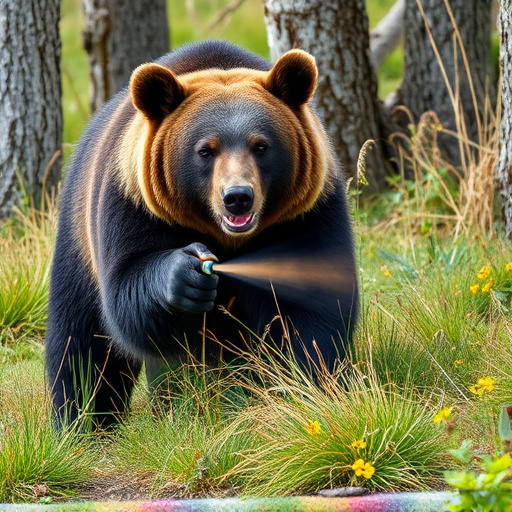Bear spray is a popular but context-dependent deterrent for hikers facing aggressive bears, using capsaicin to cause temporary blindness and disorientation. Its effectiveness varies with weather, distance, bear type, and local regulations, making informed safety choices crucial in bear country. While legal in many wilderness areas, bear spray is prohibited in urban areas, developed trails, and campgrounds due to public safety concerns. Responsible use requires understanding local restrictions, proper handling, and considering it as part of a broader safety kit that includes awareness, noise-making devices, and protective gear.
“Bear spray has long been considered a crucial defense against aggressive bears, but its effectiveness remains a topic of scientific interest. This article delves into the science behind bear spray, exploring its performance in real-world scenarios. We also navigate legal considerations and provide an essential guide to safe use, highlighting where bear spray is both allowed and prohibited. Understanding these factors ensures responsible outdoor recreation.”
- Understanding Bear Spray Effectiveness: What Science Says
- Legal Considerations: Where Is Bear Spray Allowed and Prohibited?
- Safe Use and Discrepancies: What You Need to Know Before Heading Outdoors
Understanding Bear Spray Effectiveness: What Science Says
Bear spray, also known as bear repellent, has become a popular tool for hikers and outdoor enthusiasts navigating bear country. But does it really work? Science provides some insights into its effectiveness against charging bears. Studies have shown that bear spray can be highly effective in deterring aggressive bears when used correctly. The active ingredients in bear spray, such as capsaicin, create a burning sensation in the bear’s eyes and nose, temporarily blinding and disorienting them, allowing you to escape.
However, it’s important to note that bear spray is not 100% foolproof and its effectiveness can vary based on several factors. Weather conditions, distance, and even the type of bear can influence how well it works. Additionally, there are specific situations where bear spray might be prohibited or not recommended, such as in areas where bears have grown accustomed to human food sources (known as “food-conditioned” bears). In these cases, other measures like making noise while hiking or carrying a bear bell may be more effective. Where bear spray is permitted, understanding the science behind its use can help hikers make informed decisions for their safety in bear country.
Legal Considerations: Where Is Bear Spray Allowed and Prohibited?
Bear spray, also known as bear repellent, is a popular tool for outdoor enthusiasts and individuals living in areas with high bear populations. However, its use comes with legal considerations that vary across regions. Understanding where bear spray is allowed or prohibited is essential for responsible usage. In many countries, carrying bear spray is legally permitted in designated wilderness areas, national parks, and backcountry trails where encountering bears is a potential risk. These regulations aim to balance the need for personal safety during outdoor activities with preserving wildlife habitats.
Despite its effectiveness, there are certain places where bear spray use might be restricted or entirely prohibited. Urban areas, developed hiking trails within populated regions, and campgrounds in national parks often have strict rules against carrying bear spray due to potential public safety concerns and the risk of accidental misuse. It’s crucial for individuals planning outdoor activities to check local regulations before packing bear spray, ensuring they stay within legal boundaries and contribute to the responsible co-existence with bears.
Safe Use and Discrepancies: What You Need to Know Before Heading Outdoors
Before heading outdoors in bear country, it’s crucial to understand the safe use and discrepancies of bear spray. Despite its effectiveness against charging bears, proper handling is essential for minimizing risk. Bear spray is designed as a last-resort defense, and users should only deploy it when faced with an imminent threat. It’s prohibited in certain areas due to environmental concerns or local regulations, so always check before packing.
Misuse can lead to disappointment or even harm. Ensure you’re familiar with the product, including its range, wind conditions that affect its effectiveness, and the recommended follow-up actions after spraying. Remember, bear spray is not a foolproof solution; it’s one tool in your safety kit. Stay aware of your surroundings, make noise to deter bears, and carry other forms of protection like bear bells or a sturdy stick.
Bear spray has proven to be an effective deterrent against charging bears, but its legality varies across regions. While it’s a valuable tool for outdoor enthusiasts in bear-inhabited areas, understanding local regulations is crucial. Remember that even with bear spray, safe practices and knowledge of where it’s prohibited are essential for your safety and the preservation of these majestic creatures. Always check local guidelines before venturing into potential bear country to ensure a responsible and enjoyable experience.
